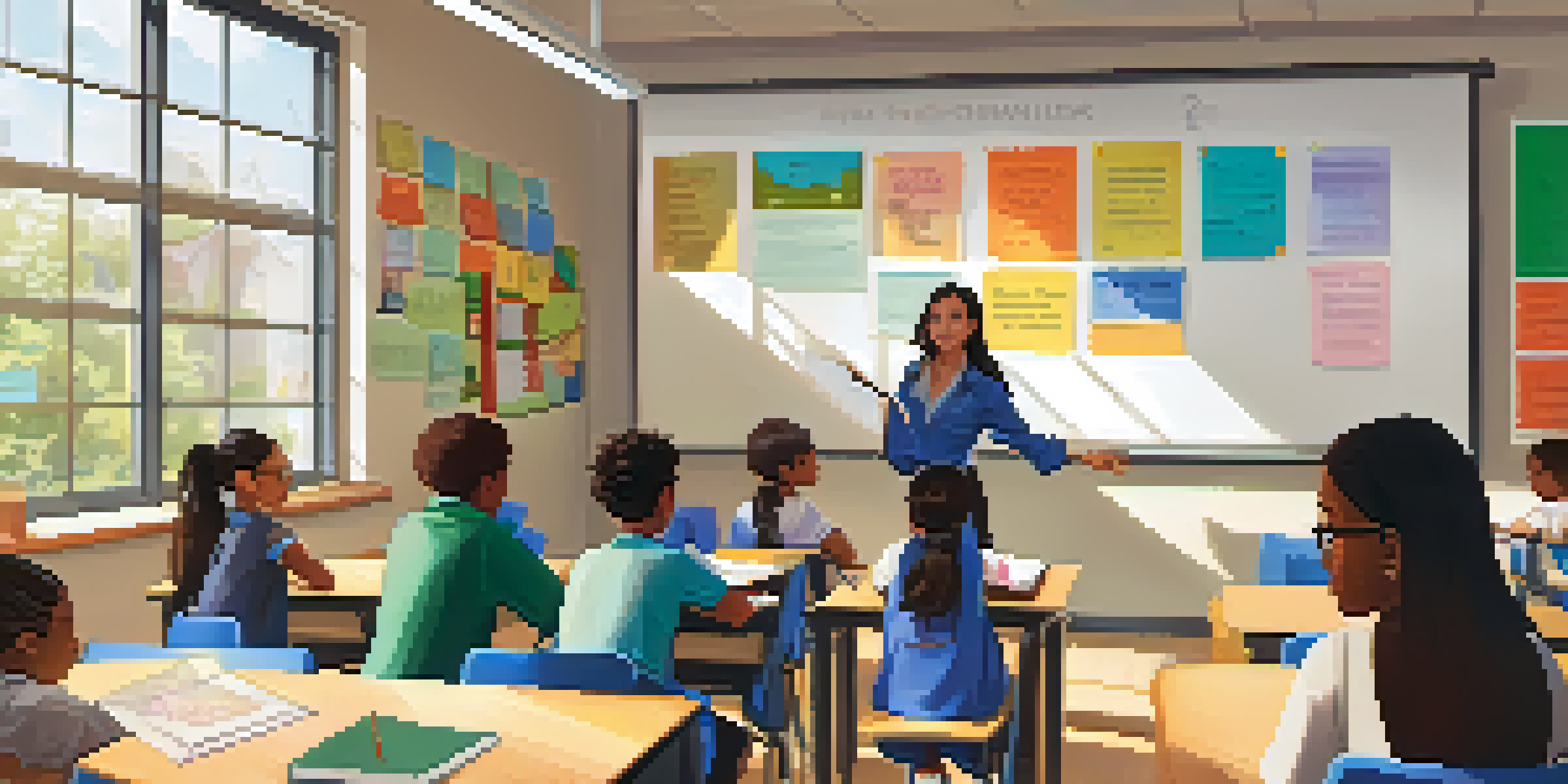Cognitive Load Theory: Bridging Theory and Practice

Understanding Cognitive Load Theory: A Brief Overview
Cognitive Load Theory (CLT) was developed by John Sweller in the 1980s, focusing on how our brain processes information. At its core, CLT suggests that learning is most effective when the cognitive load, or mental effort, is optimized. Imagine your brain as a computer: if it's overloaded with tasks, it struggles to function efficiently, leading to decreased learning outcomes.
The mind is not a vessel to be filled, but a fire to be kindled.
There are three types of cognitive load to consider: intrinsic, extraneous, and germane. Intrinsic load refers to the inherent difficulty of the material, extraneous load is the unnecessary information that distracts from learning, and germane load is the effort put into processing and understanding the material. Balancing these loads is crucial for effective learning.
By understanding CLT, educators can create learning environments that minimize extraneous load while maximizing germane load. This can lead to deeper understanding, better retention, and ultimately, a more successful learning experience.
The Role of Intrinsic Load in Learning Materials
Intrinsic load is determined by the complexity of the material and the learner's prior knowledge. For instance, a beginner trying to learn algebra faces a higher intrinsic load than someone who has mastered basic arithmetic. This means that educators must consider students' backgrounds when designing courses.

To manage intrinsic load effectively, breaking down complex topics into smaller, manageable chunks can be beneficial. Think of it like eating a large cake; tackling it slice by slice makes it much more achievable. This approach not only reduces cognitive overload but also enhances understanding.
Optimize Cognitive Load for Learning
Cognitive Load Theory emphasizes that learning is most effective when intrinsic, extraneous, and germane loads are balanced.
Additionally, using scaffolding techniques—providing support structures as learners progress—can help in managing intrinsic load. This allows students to build confidence and competence as they advance, ensuring that their cognitive resources are used efficiently.
Minimizing Extraneous Load for Better Learning
Extraneous load arises from poorly designed instructional materials or unnecessary information that distracts learners. For example, a cluttered presentation filled with irrelevant images can divert attention from the core message. The goal should be to streamline content to focus on essential information.
Learning is not attained by chance, it must be sought for with ardor and attended to with diligence.
One effective strategy to minimize extraneous load is using clear, concise visuals that directly support the learning objectives. Visual aids, when used correctly, can enhance comprehension and retention by providing context without overwhelming the learner. Imagine a well-organized bookshelf versus a messy one; the former makes it easier to find what you need.
Moreover, simplifying language and avoiding jargon unless it's necessary can also help reduce extraneous load. This ensures that all learners, regardless of their background, can engage with the material without feeling lost or confused.
Enhancing Germane Load to Foster Deep Learning
Germane load is all about the effort invested in processing and making sense of information. This type of load is crucial for promoting deeper learning and understanding. When students actively engage with the material, such as through discussions or problem-solving, they are investing in germane load.
Incorporating collaborative learning activities can significantly enhance germane load. For example, group projects encourage students to share ideas and challenge each other's thinking, leading to richer insights and a deeper grasp of the subject matter. It's like a potluck dinner, where everyone brings something unique to the table.
Minimize Distractions in Education
Reducing extraneous load by streamlining instructional materials and using clear visuals can significantly enhance student engagement.
Furthermore, providing opportunities for self-reflection can also boost germane load. When learners take the time to think about what they've learned and how it applies to their lives, they create meaningful connections that enhance retention and understanding.
Practical Applications of Cognitive Load Theory in Education
Applying Cognitive Load Theory in educational settings can transform the learning experience. By designing lessons that consider cognitive load, educators can create more effective instructional strategies. For instance, using the 'chunking' method to break down information into bite-sized pieces makes it easier for students to absorb and retain knowledge.
Utilizing technology in the classroom can also support cognitive load management. Interactive tools like quizzes and simulations can provide immediate feedback, allowing students to adjust their learning strategies in real-time. It's similar to a video game, where players learn and adapt as they progress through levels.
Additionally, professional development for teachers on cognitive load principles can empower them to better support their students. By understanding how to manage cognitive load, educators can create more engaging and productive learning environments.
Challenges in Implementing Cognitive Load Theory
While Cognitive Load Theory offers valuable insights, implementing its principles can come with challenges. One common hurdle is the variability in learners' backgrounds and experiences. What works for one student might not resonate with another, requiring educators to be flexible and adaptable.
Another challenge is the potential for over-simplification. In an effort to reduce cognitive load, educators may inadvertently strip away essential content that students need to engage with deeply. Finding the right balance between reducing load and maintaining depth is crucial.
Encourage Active Learning Strategies
Promoting germane load through collaborative activities and self-reflection fosters deeper understanding and retention of knowledge.
Finally, the rapid pace of educational technology can make it difficult to keep up with best practices in managing cognitive load. Continuous professional development and staying informed about the latest research can help educators navigate these challenges effectively.
Future Directions for Cognitive Load Theory Research
Cognitive Load Theory continues to evolve, with ongoing research exploring its implications in various learning environments. Future studies may delve into how CLT principles can be effectively integrated into online learning platforms, which have become increasingly popular. This exploration is vital as more learners engage with digital content.
Moreover, there's a growing interest in examining how cognitive load interacts with emotional factors in learning. Understanding the interplay between emotions and cognitive load can lead to more holistic approaches to teaching that cater to the whole learner.

As research progresses, it's essential for educators to stay updated on findings and adapt their practices accordingly. Collaboration between researchers and practitioners can help bridge the gap between theory and practice, ultimately enhancing the educational experience for all students.